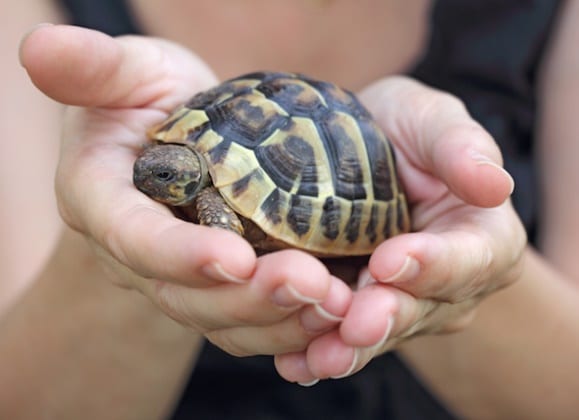Turtles are fascinating creatures to watch, having attractive markings and colors, including interesting personalities. Many like them as they are great and interactive pets to have. They are recognized by owners begging for food. This is all about talking more about their charm.
Nevertheless, it is understandable on the part of owners that a lot of work is needed in keeping a turtle. Just remember that they are not the same as cats and dogs. And they never enjoy it being handled. The good thing about them is that they can live up to almost twenty to thirty years. That is when they get proper enclosure while growing, which requires a bigger investment than expected.
When you go buy a turtle, be ready to commit to its care and maintenance.
Basic Necessities
What You Need to Know About Pet Turtles
Video Credits: Earthling1984
Housing
The first concern when it comes to necessity is housing. Choose a size that is bigger, so it becomes a lot better. A lot of aquatic turtles are known as active swimmers. They choose the biggest size of the housing. One more popular choice is glass aquaria. Better as well to choose for a 30-gallon tank for smaller turtle species. This will often go in between four and six inches.
Turtles having a size between six and eight inches, it is appropriate to have a 55-gallon tank. Turtles that measure more than eight inches require tanks in a range of 75 to 125-gallon. This one is a lot better as a choice.
Housing choices will include plastic tubs. Some tubs will have a land and water area designed for them. A room that has an indoor and outdoor pond makes a viable option, too.
Clean Water
The secret here is to have clean water. Add up a good filtration system to accomplish this. A canister filter or an internal aquarium filter also makes two great choices for a turtle tank. In any of these two, make sure that the filter is maintained. Just keep in mind that the turtle is a messy creature.
Tank Decorations
Set the decorations of the tank to a minimum. Do not use gravel or substrate to make cleaning easier. However, if a bare tank does not appeal much to you, decorate it. However, be prepared for more frequent and more difficult cleaning.
A basking spot can be set in like a rock. This can be purchased at a local pet store. Rather, an above-tank basking platform is good to use for aquatic turtles. No matter what type of basking spot to choose, a big one will allow the turtle to climb out of the water. It should be placed securely below the basking light.
Lighting Requirements
Lighting facet is often one misunderstood or neglected feat of turtle care. Just remember that turtle reaps benefits from light: heat and ultraviolet light. Two ultraviolet light types like UVB and UVA are important for the health of your turtle.
With UVA light, it promotes natural behavior that includes reproduction and feeding. UVB light is also needed for the proper breakdown of vitamin D3. This allows metabolism and calcium absorption.
The right UVB exposure is needed for the growth of the turtle. This must be available to avoid serious health issues like shorter life span, secondary hyperparathyroidism, and poor shell growth.
There can be found as well as light systems and styles of bulbs. No matter what you choose, take care of the heat and UV requirements of the turtle. Just know that not all turtles have similar needs. Do your research for the specific needs of a turtle you want to keep.
Nutritional Needs
Prevention has always been the best medicine when you want to raise a healthy turtle. Promote a diet that is balanced as the key success here. Offer it many kinds of foods but still quality foods. The dietary needs of the turtle change once it matures.
Even though many of them are carnivorous by nature, they still consume plants upon reaching adulthood. Plant matter always makes up a higher percentage of their diet.
Many freeze-dried and frozen foods can be given to them like snails, grasshoppers, crickets, and krill. They also accept foods like worms, insects, small fish, and snails. They are loaded with calcium for additional benefit. Cuttlebone also makes a good course of calcium.
Turtles also enjoy red and green-leaf lettuce and dandelion leaves. Some aquatic plants can be found, too, like the water hyacinth, water lettuce, and anacharis. Cabbage, mushrooms, and spinach also make perfect additions.
Use of Thermometers
Maintain the environment of your turtle by the use of a thermometer. This is true to both the water and the air. This is the same with whatever you have, be it tortoise or turtle. Read on more information to determine the needed temperature. This also is about a good temperature that avoids health problems from occurring. If the turtle is always in the air, it means to say it is the wrong temperature. It will then get a respiratory infection or will stop eating.
Good and Consistent Care
Provide the turtle good and consistent care so that it remains happy and healthy. Health problems in animals occur when owners do not feed them properly. That is true as well if they do not clean it regularly. If the water is not clean and is not maintained, it will not offer the pet the needed temperature.
Calcium and Vitamin A deficiencies are just so common among captive reptiles. Respiratory disease, parasites, shell fractures, abscesses, and shell infections are most likely felt by these turtles. That is when these conditions demand expert veterinary care.
Salmonella is one common disease that is carried by a turtle. This is transmitted to people while causing serious diseases. This is true to the immune system of turtles compromised.
Keep a clean terrarium and push forth good hygiene. Buy an inexpensive conditioner that can be added to the water. Keep organisms such as salmonella in control. This will prevent turtle diseases from occurring ever again.
Other Essential Tips
When you have a turtle as a baby, offer it more tender, love, and care. Keep the things below in mind.
- Make the water not too deep. The baby turtle is just beginning to swim. Water should fall an inch deeper.
- Make the temperature of the air and the water of the terrarium about eighty-six degrees Fahrenheit. Your baby turtle should have access to both water and land.
- The smallest turtle must have an aquarium or terrarium that is not as small as 29 gallons. It should measure four-feet long, eighteen-inch tall, and eighteen-inch wide.
- Change the water of the baby turtle daily. That is true if you have no turtle tank filter. Change it for 2 or 3 days.
- Feed it every day for up to 2 times a day.
- Look for any signs of illness like discoloration, swollen eyes, and avoidance of food. Call the veterinarian who specializes in reptile care.
A Few Facts to Learn
Pet turtles can live up to twenty years. This is one reason why you must not be in a hurry to buy it. It will require work and attention to the turtle. Buy it provided that you absolutely love it. Do not buy only because it’s the trend. Ignite the love and desire for animals first before keeping a turtle.
Do’s
- Buy only turtles that can be bred in captivity. Since they already are adapted in captivity, there is less chance that parasites or diseases will come out. They also are accustomed to commercial foods.
Whether you buy a turtle from a breeder, online, or local pet store, you need to ask if they are wild-caught or captive-bred. Better yet, adopt a turtle from a local turtle rescue organization. For sure, they have the right turtle for you.
Don’t
- Do not collect turtles that come from the wild. There are states that go restrict the collection of wild turtles. While many of these turtle species are endangered or threatened. That is why it is not legal to collect them.
- Do not release any of the unwanted turtles into the wild. This will only bring about environmental issues. The turtle may also not be equipped in handling environmental conditions locally. Or else, you might just send it to its death.
For beginners, remember that not all turtles can seem appropriate to you. There are those that demand special attention like huge habitat requirements and dietary restrictions.
Painted turtles are also very attractive with four known species like the southern-painted, eastern painted, midland painted, and western painted. The majority of them are active swimmers who require a large water area for them to swim enough. They are also robust eaters and omnivorous animals. Their diet consists of plant matter as they reach their level of maturity. The good thing about turtles is that they come in small size, a hearty appetite, pleasant nature, ease of care, and beautiful colors.



